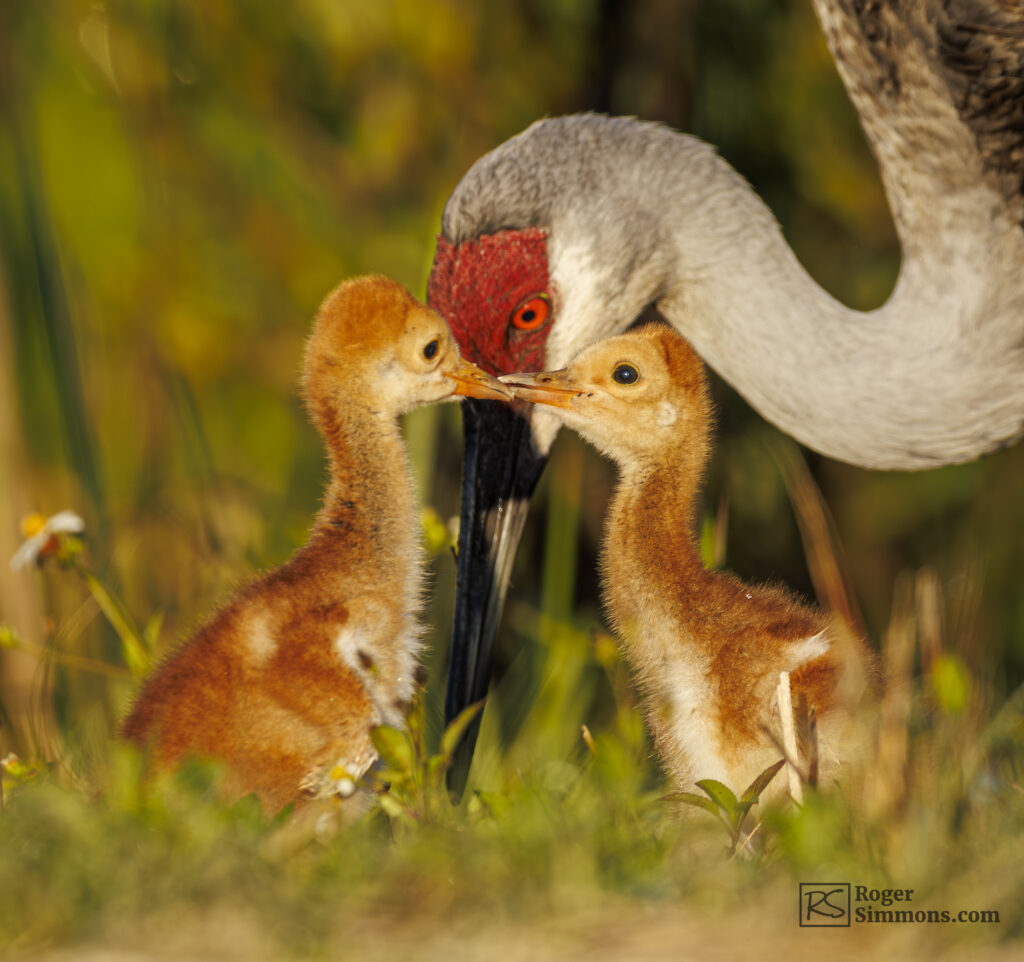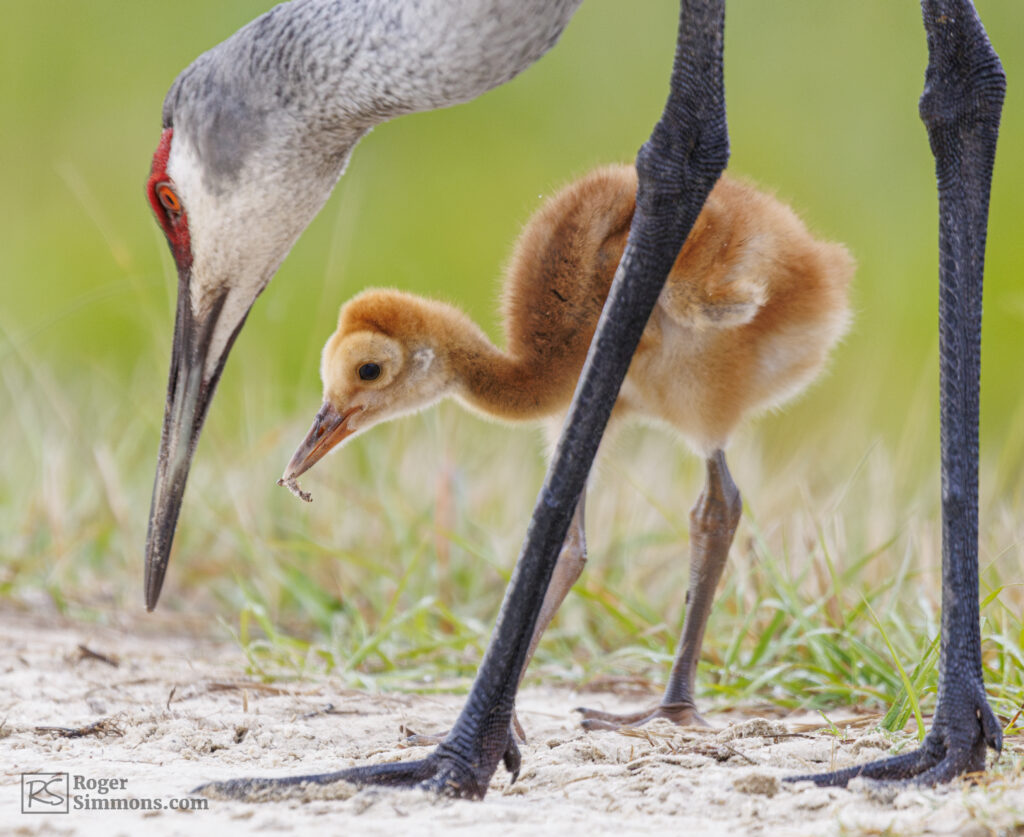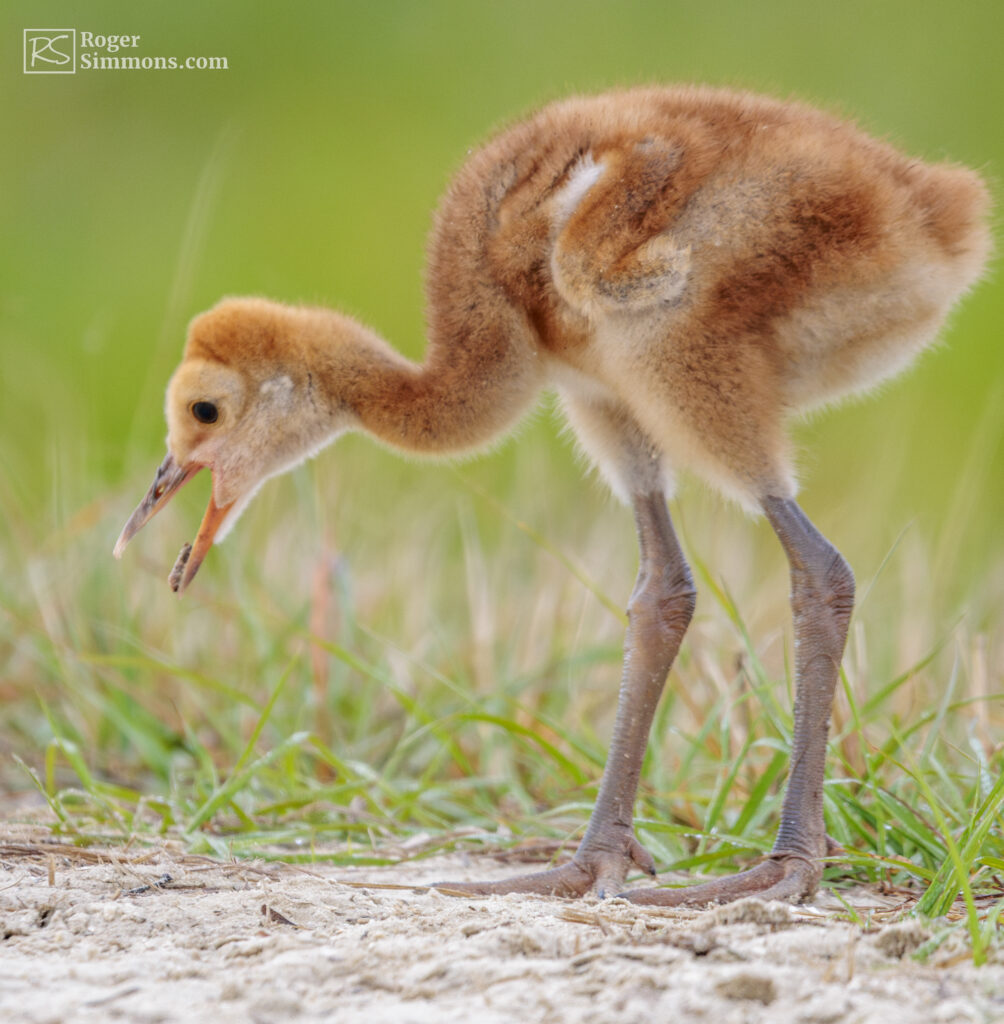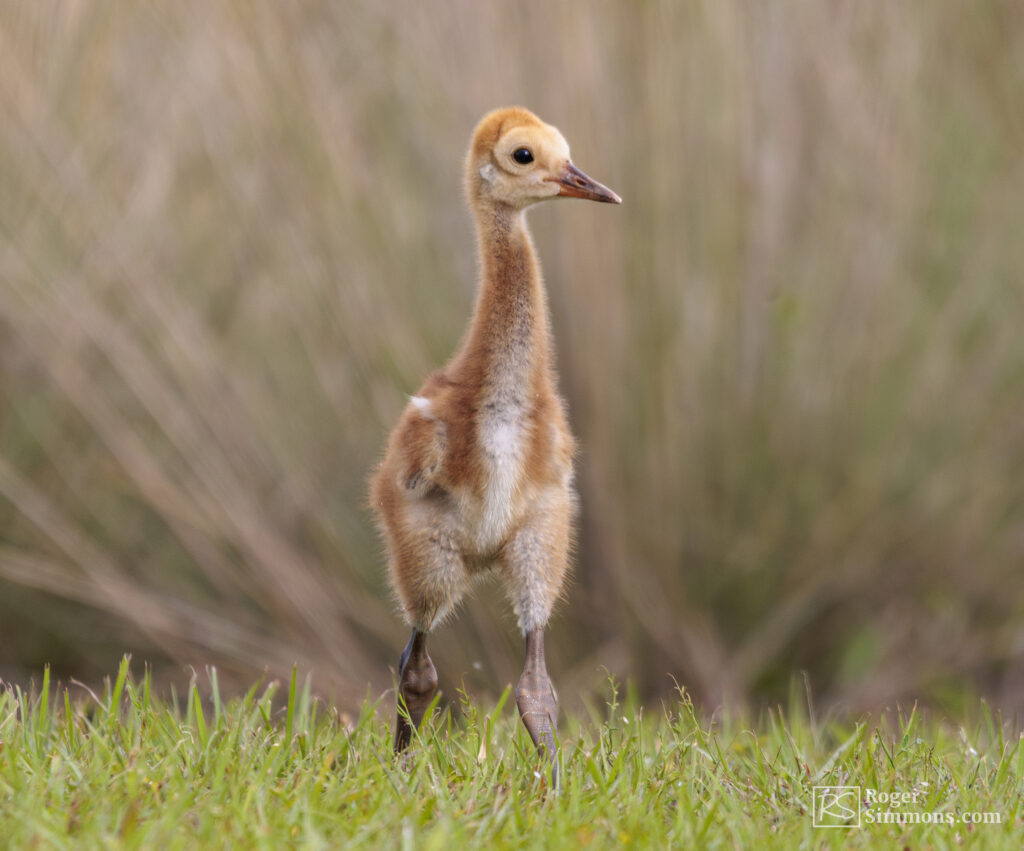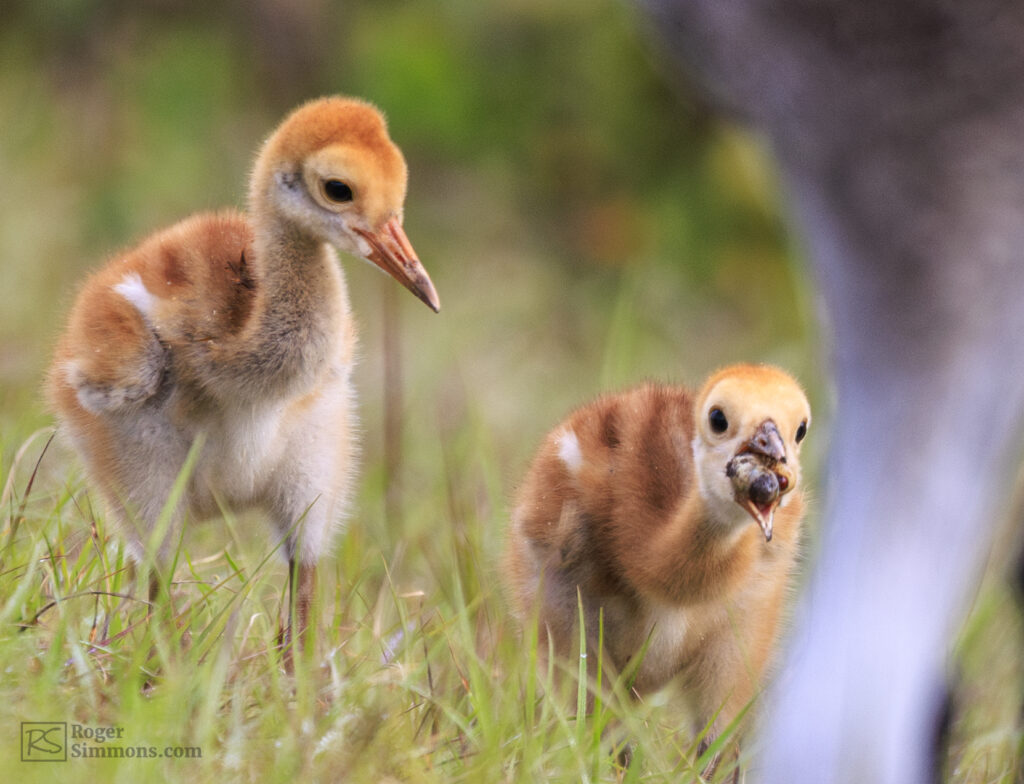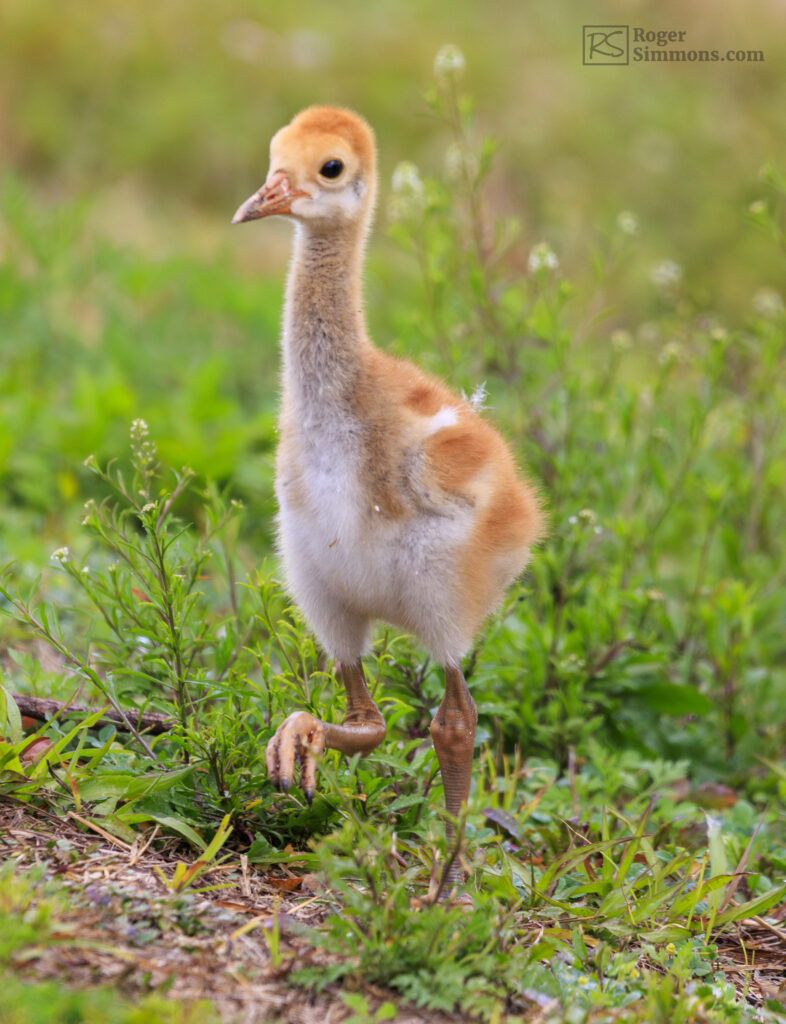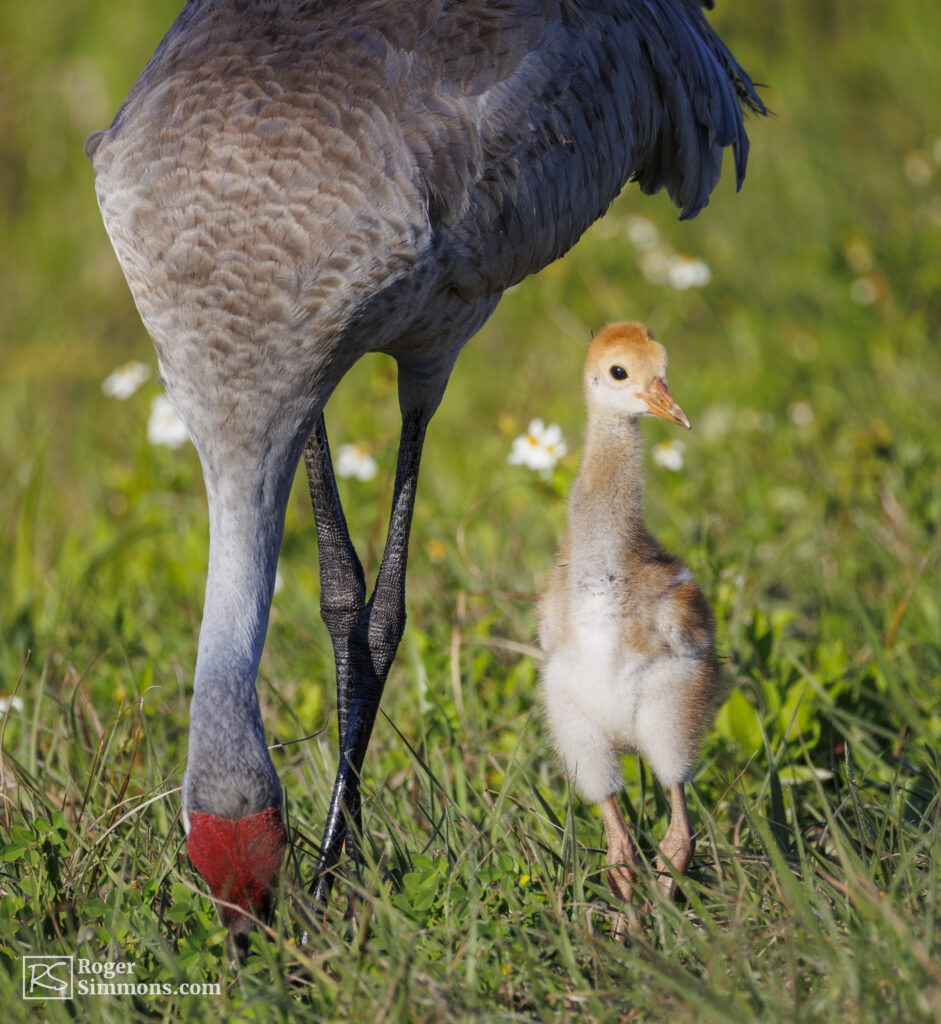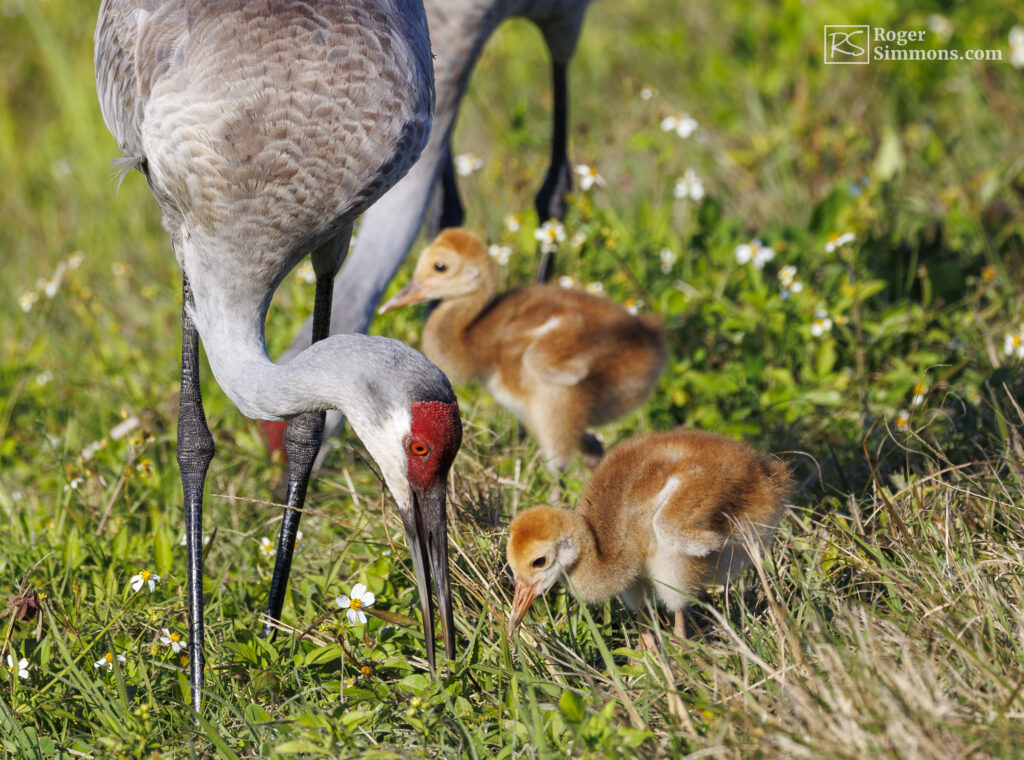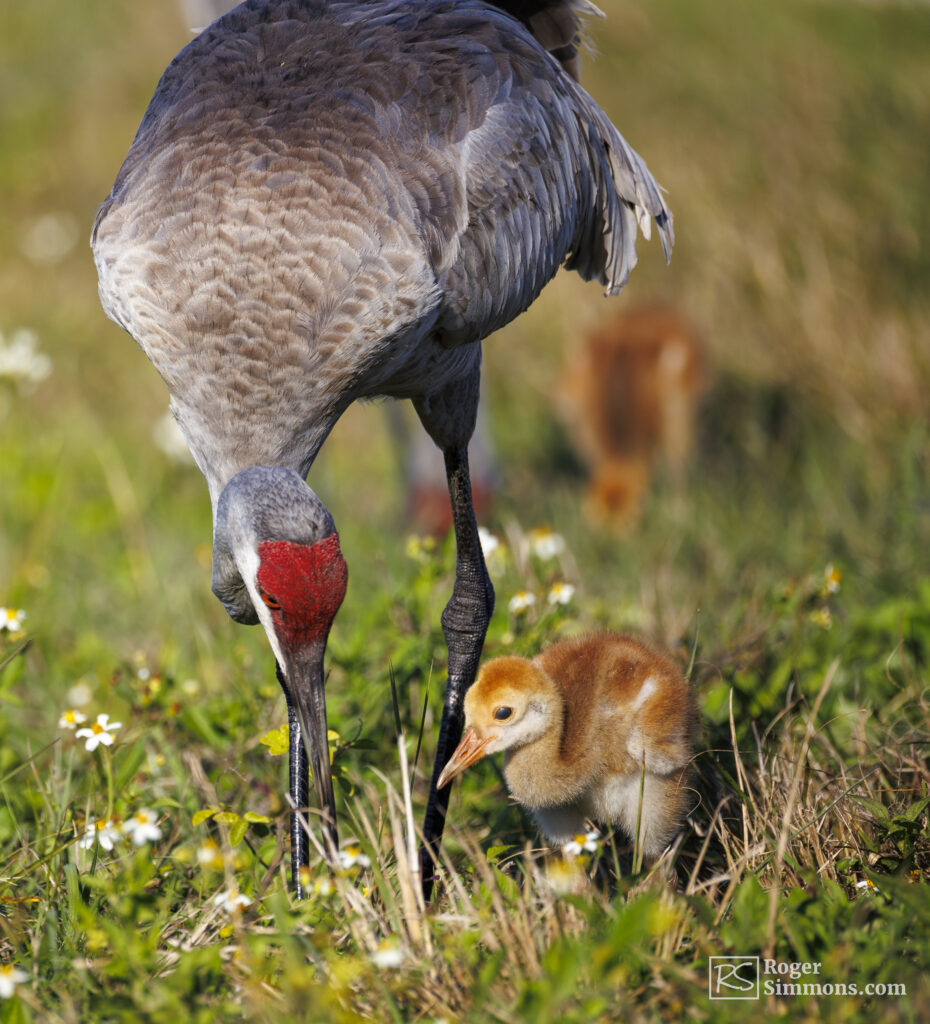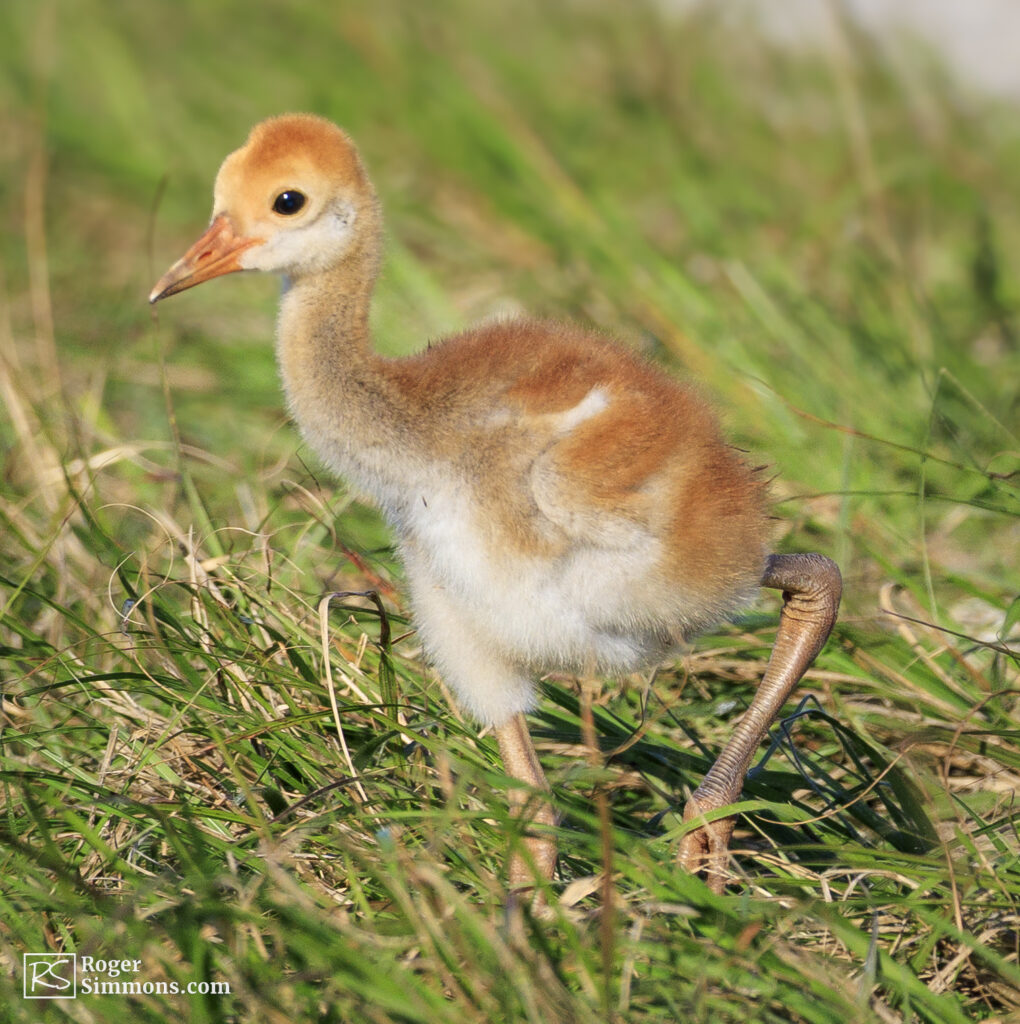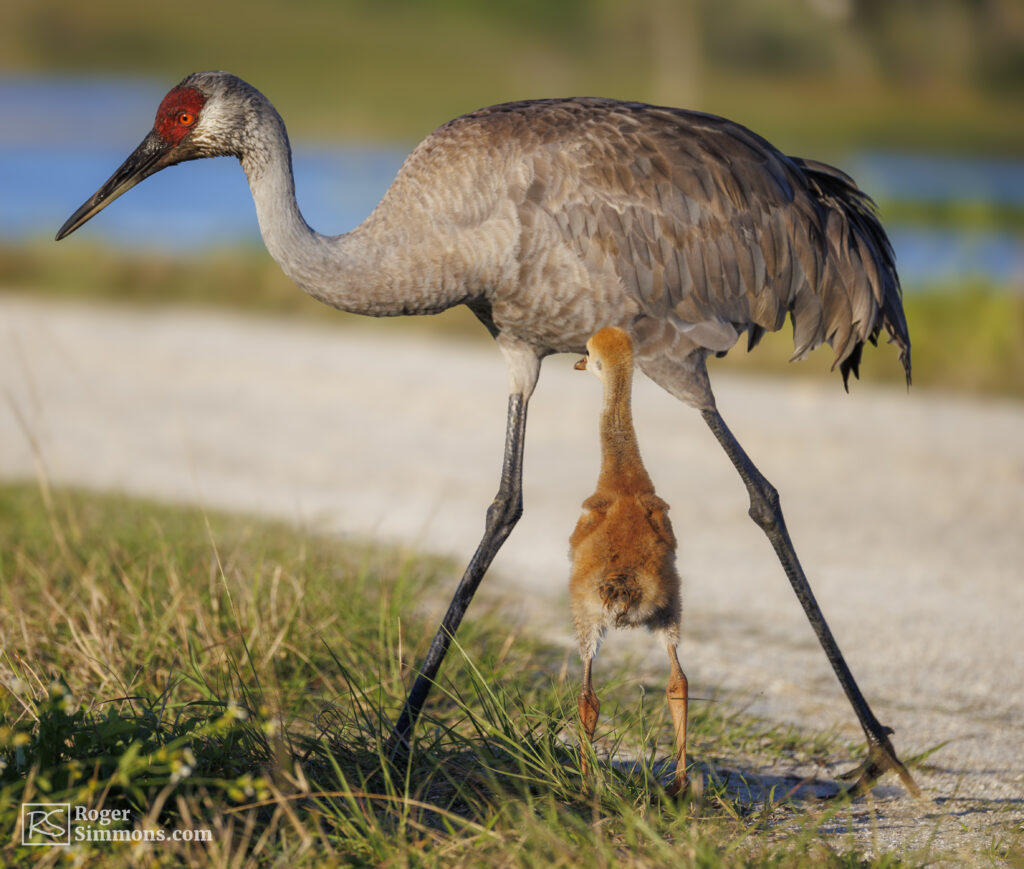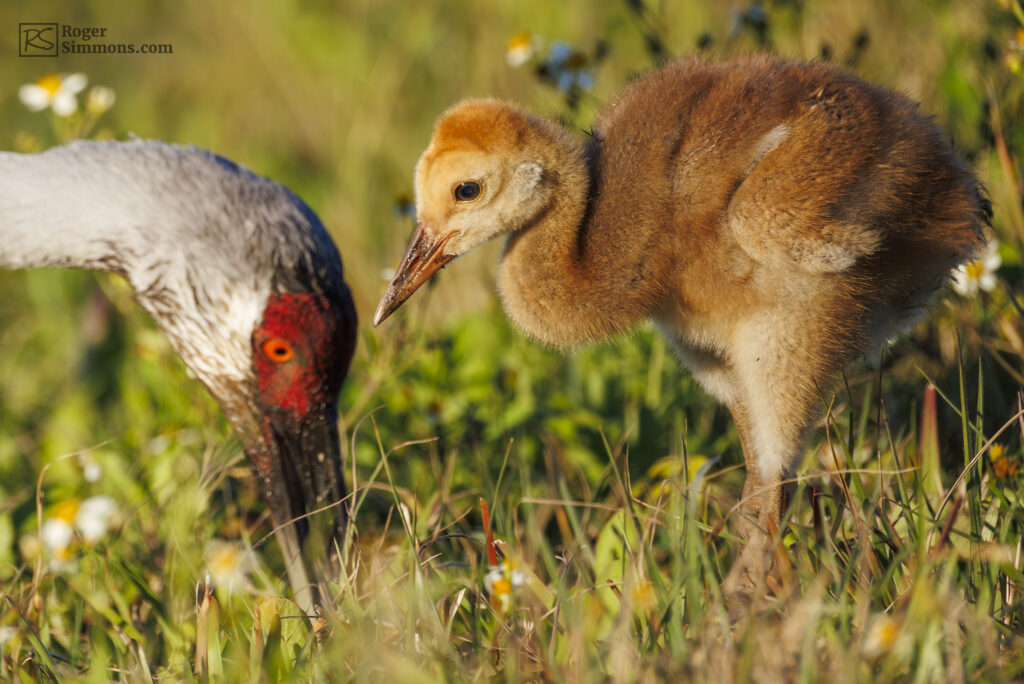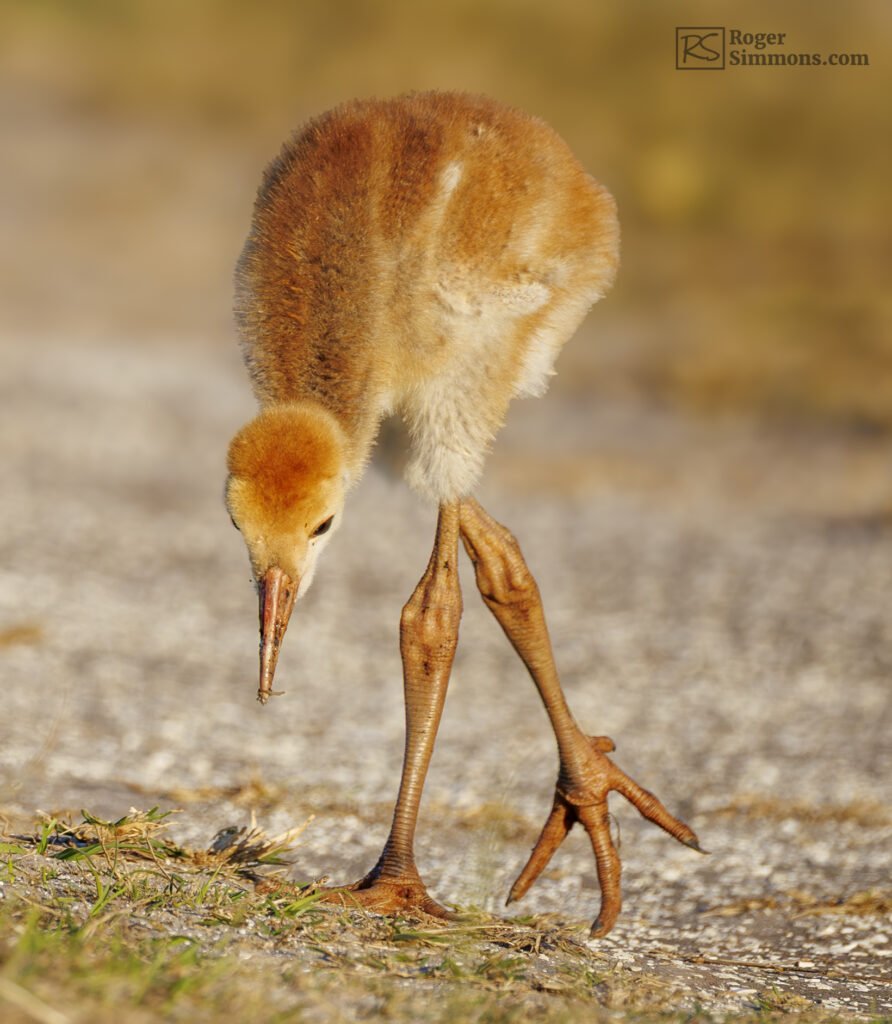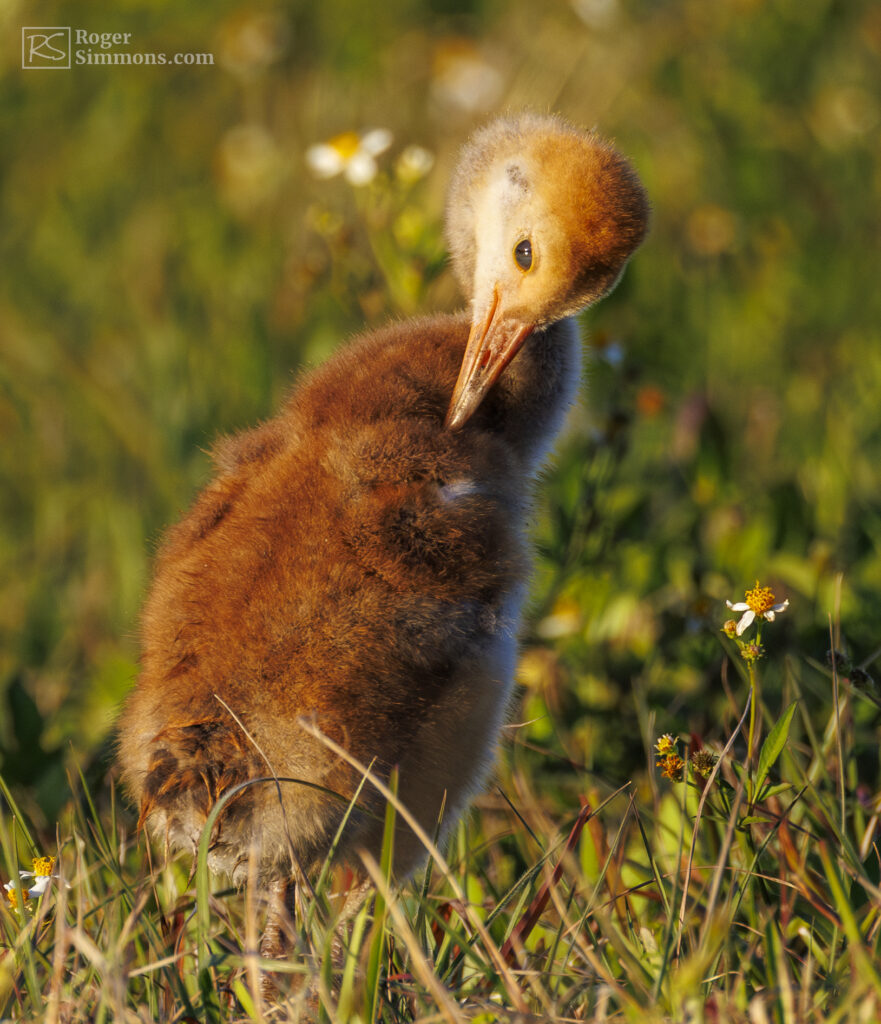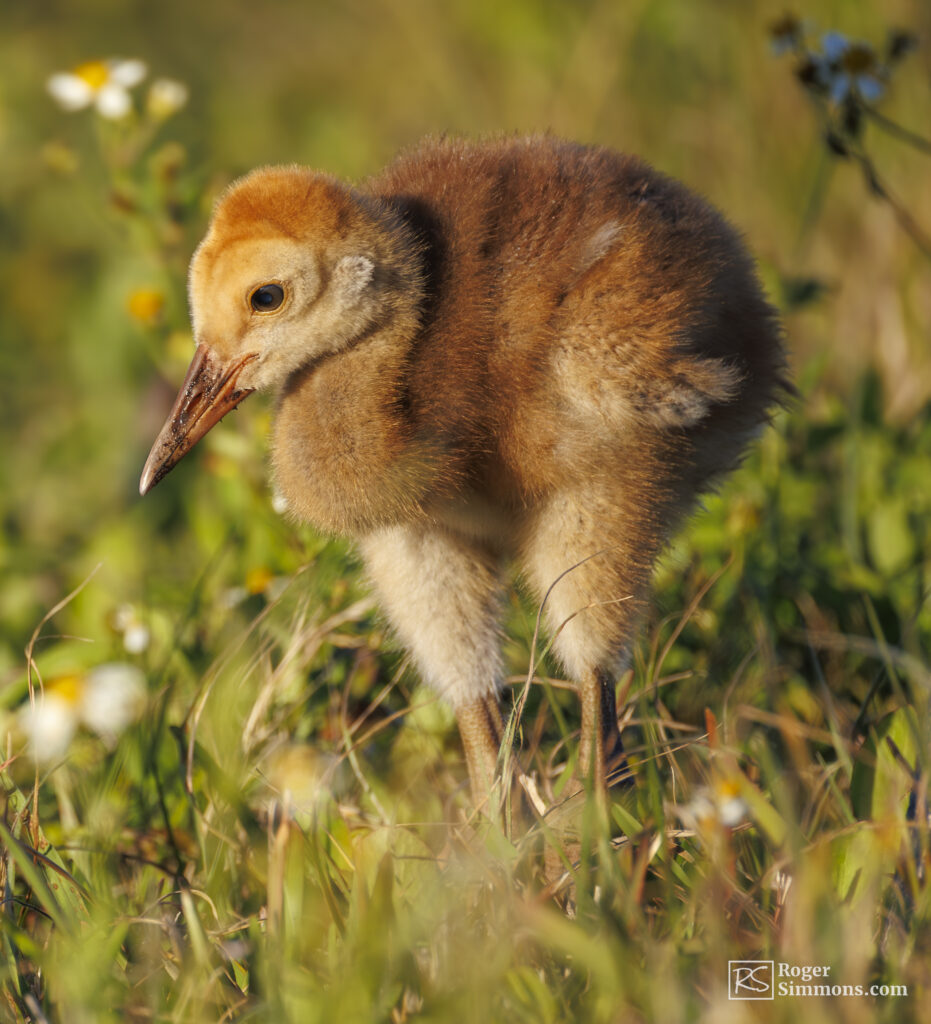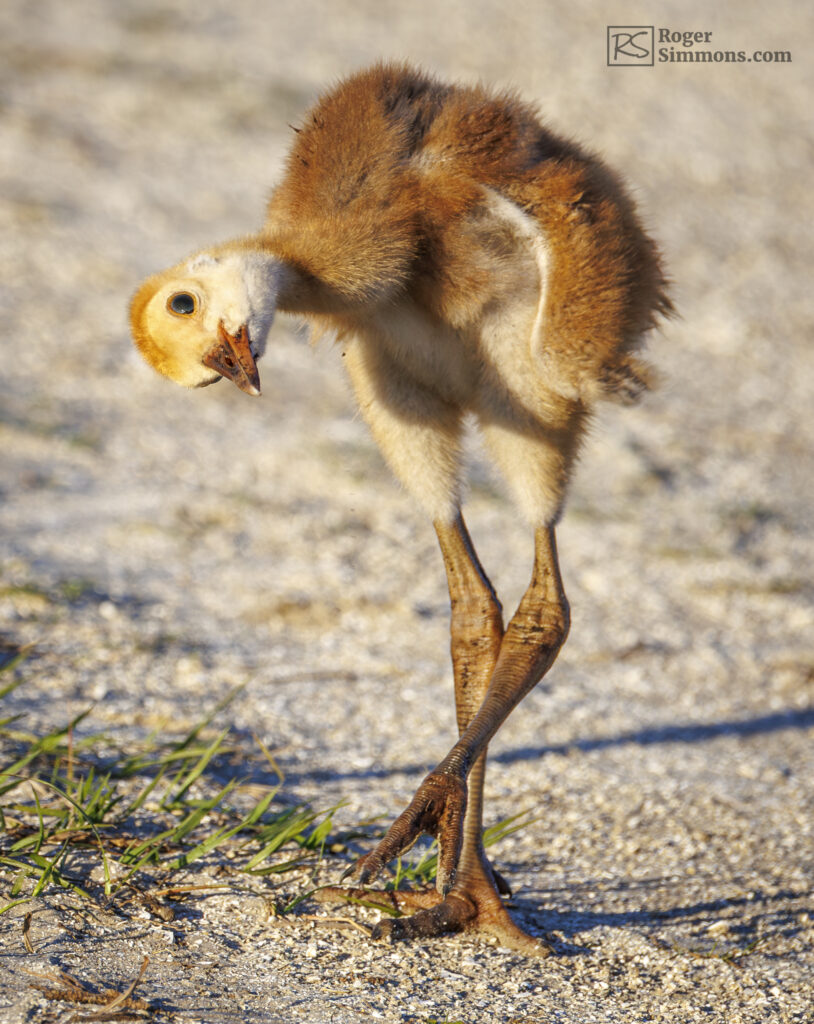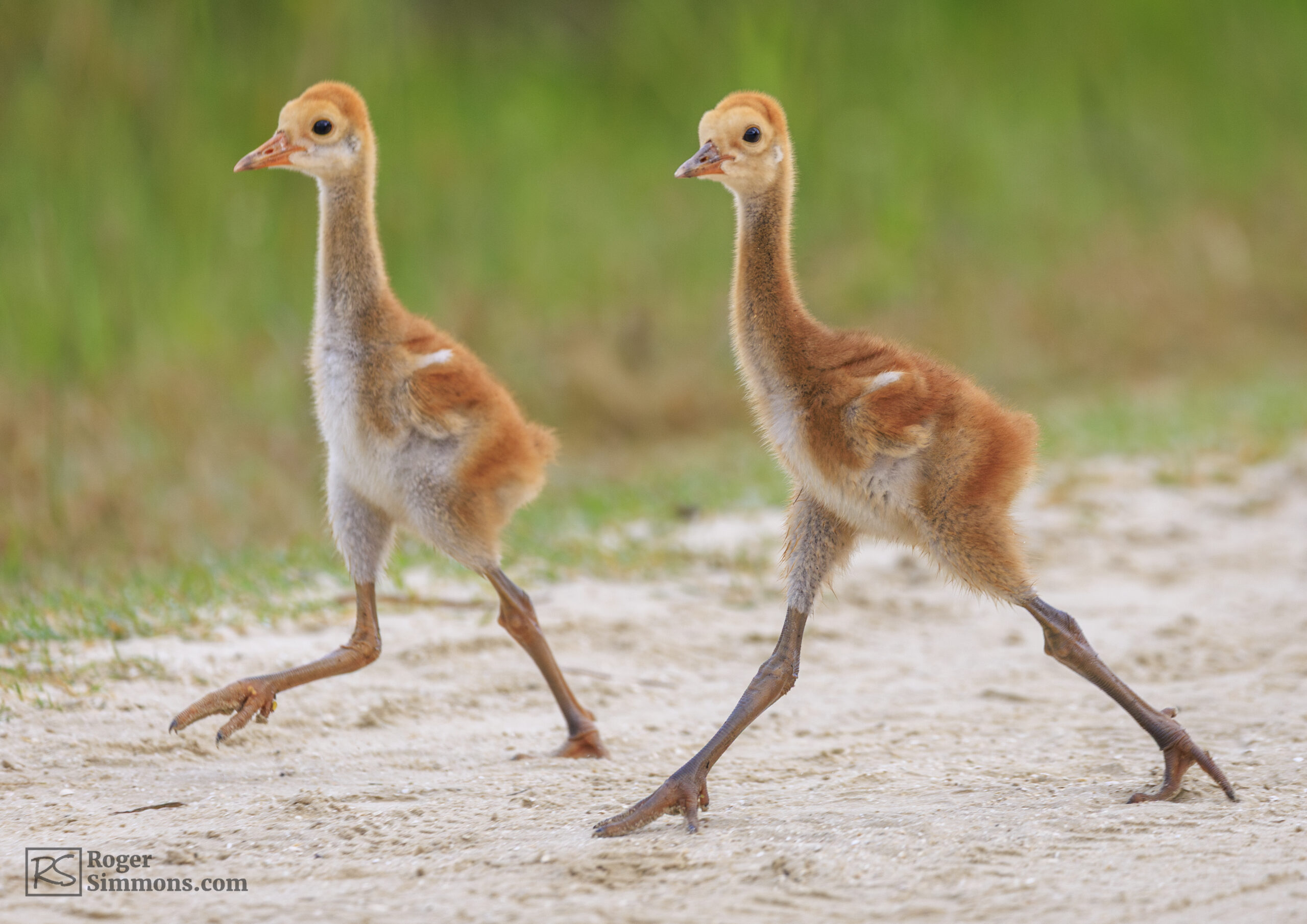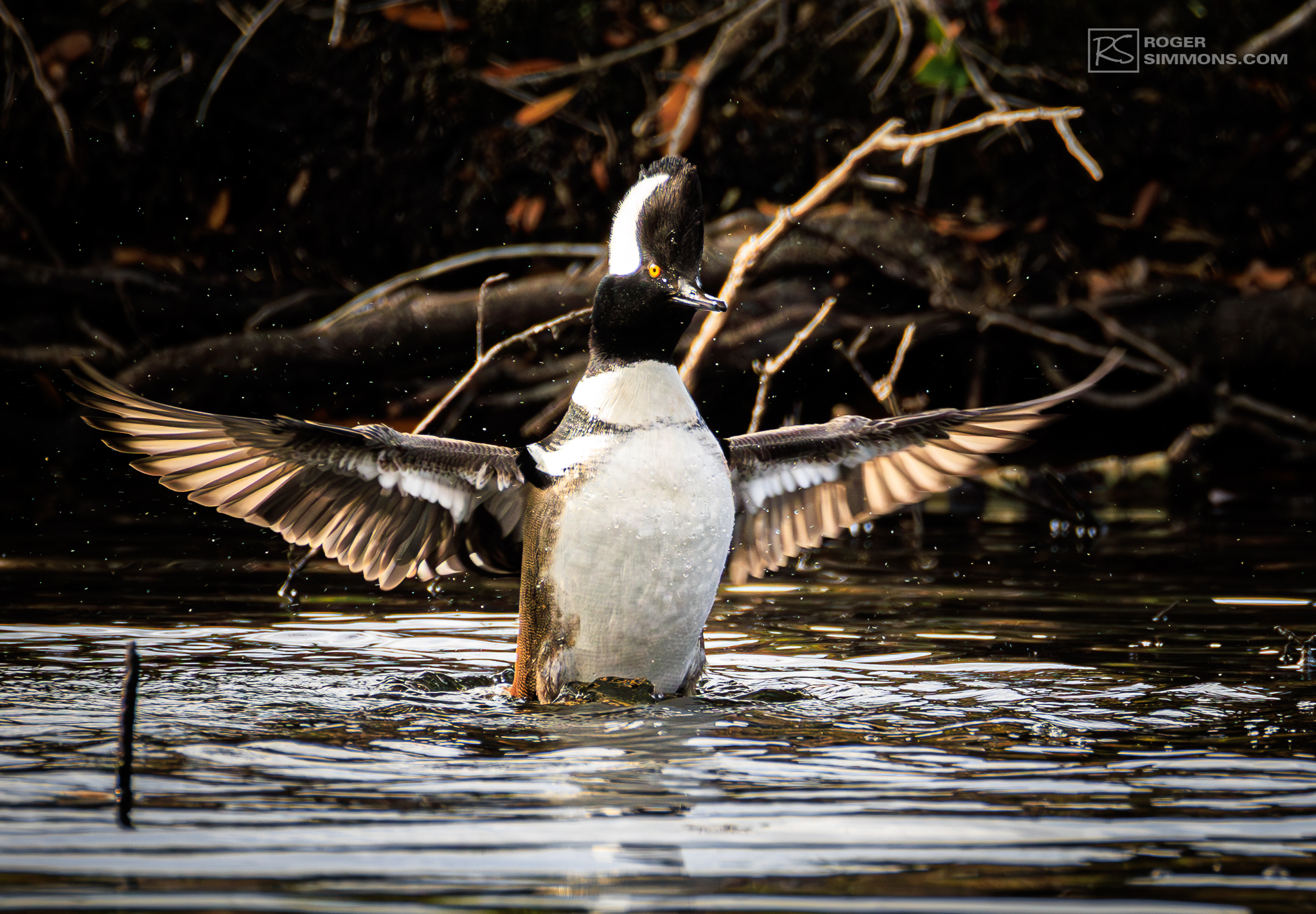Watching – for the third year – the Sandhill Crane colts growing quickly at Orland Wetlands made me curious about their growth rate and background. So, after doing some quick Google searches, here are some facts about Sandhill Cranes and colts.
There are two subspecies of Sandhill Cranes in Florida. The Florida Sandhills (which are the ones at Orlando Wetlands) number 4,000 to 5,000 in the state and are non-migratory year-round breeding residents. In winter, 25,000 migratory greater Sandhill Cranes – the larger of the two subspecies – come here to join them. Source: Florida Fish and Wildlife Conservation Commission.
Sandhill Crane females normally lay two eggs, although usually only one colt survives. Within hours of hatching, the young are off the nest and following their parents. “Together, they forage for seeds and roots, crop plants such as corn and peanuts, insects, snakes, frogs and occasionally young birds or small mammals.” Source: Florida Fish and Wildlife Conservation Commission.
Sandhill Crane colts have quite the growth spurt, growing an inch a day between 10 and 30 days of age. They’ll be four to five feet tall within a few months. Source: Google AI Overview
The baby cranes are called “colts” because of their strong, long legs. Source: Wild Sensibility
Here are some photos of the fast-growing Sandhill Crane colts at the wetlands.
